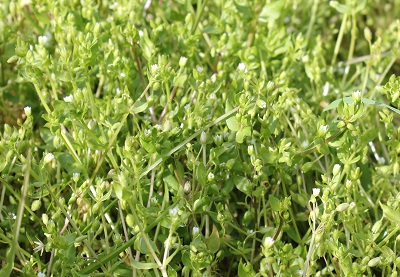Winter Oilseed Rape – Weed management
22 August 2019In ideal conditions where the soil is warm and moist, seed well covered by soil and a low risk of crop failure, then pre-emergence weed control is the most cost-effective option.
In ideal conditions where the soil is warm and moist, seed well covered by soil and a low risk of crop failure, then pre-emergence weed control is the most cost-effective option, especially for annual meadow-grass and for some of the more problematic weeds such as shepherd’s purse and cranesbill. It seems likely that pre-emergence treatments could work well this season. The crop must be treated within 48 hours of sowing. If for any reason this has not been possible, or if the seed is not sufficiently well covered by settled soil or heavy rain is forecast, then post-emergence treatments can be used. For well-covered seed, post-emergence treatments can be applied from the fully expanded cotyledon stage, if seed is not well covered then wait until the crop has two to three fully expanded true leaves.
Early post-emergence herbicide options are similar to pre-emergence, except that products containing clomazone cannot be applied post-emergence. Generally, metazachlor mixes with quinmerac or dimethenamid-P are a better option post-emergence than straight metazachlor – if a mix of the three active ingredients is used there is root, shoot and leaf uptake, compared with just root uptake from straight metazachlor. Greatest spectrum of weeds is controlled pre-emergence. They have a more limited spectrum post-emergence and weeds that are susceptible post-emergence must be quite small – generally, cotyledons stage up to 2 true leaves, depending on species. If weeds are too large then it may be necessary to apply a follow-up treatment. Belkar (halauxifen-methyl + picloram) is a new option for post-emergence control of broad-leaved weeds in the autumn – it is applied slightly later than metazachlor-based treatments, has a broad weed spectrum, and is largely foliar acting on emerged weeds.
If grass weeds, as well as broad-leaved weeds, are an issue then a follow-up propyzamide treatment later in the autumn once the soil temperature has fallen below 10°C can help control grasses not controlled by earlier treatments.
Protection of water
With all residual herbicides in oilseed rape, it is important to remember that all the common rape herbicides are regularly being detected in watercourses above EU drinking water limits. To help protect metazachlor, there are label restrictions – no more than 1000g/ha active ingredient applied to the same field over a three-year rolling period and no more than 750g active per crop per season.
The latest VI Water Protection Advice Sheet (www.voluntaryinitiative.org.uk/en/water/advice) advocates a cut-off for application of metazachlor or quinmerac to drained soils – they should preferably be applied by 30th September, and should not be used after 15th October. Additionally, the general VI best practice advice to protect water should be followed:
- Fill sprayer in a bunded area and clear up any spills immediately
- Ensure there is a 6m grass buffer strip next to watercourses
- Wash sprayer down in the field or in a bunded area
- Do not apply when soils are cracked, dry or saturated, or if drains are flowing
- Do not apply if heavy rainfall is expected within 48 hours of application as this can lead to significantly higher losses to water
In high-risk areas, metazachlor and quinmerac should not be applied after 30th September, and at least six of the following should be met in order to reduce the risk:
- Soils are moist and NOT dry, cracked or saturated
- Field drains are NOT flowing and are unlikely to flow within 7 days of application
- Field slope is less than 5% (a 5% gradient is 1-metre fall in 20 metres)
- The field is NOT bordered by a watercourse
- Metazachlor* is applied at less than 750g a.i./ha or quinmerac at less than 250g a.i./ha, especially in combination with other herbicides. Check required dose with your BASIS-registered adviser
- The field has a 5m no-spray zone or 6m grass buffer strip adjacent to water
- The field has NOT been deep sub-soiled (below plough layer) in the preceding 6 months
- The crop has been established early with minimum tillage of only the top 4-6 cm or by direct drilling
- There is NO risk of heavy rainfall within 48 hours of application
Sign up to the FAS newsletter
Receive updates on news, events and publications from Scotland’s Farm Advisory Service

